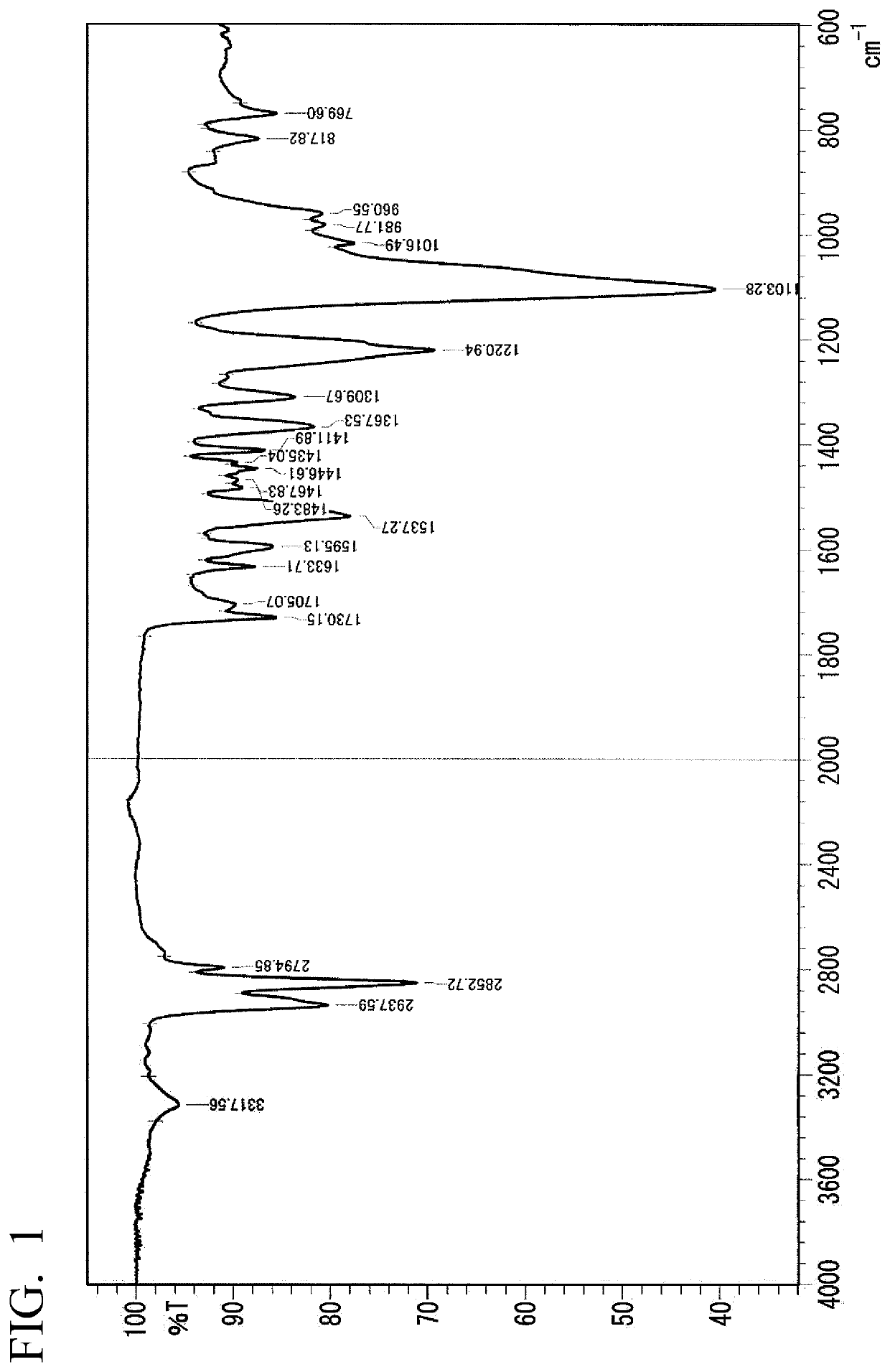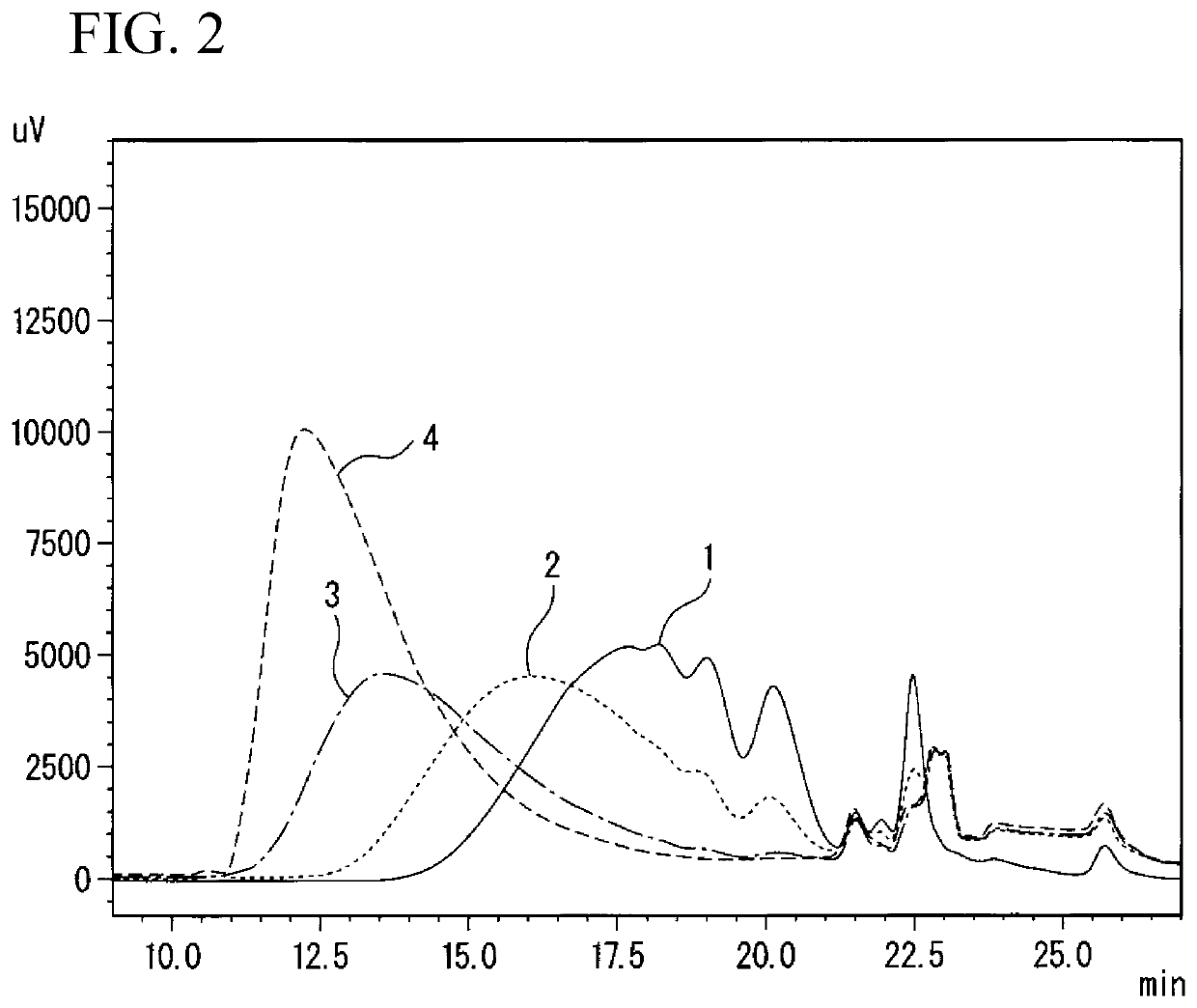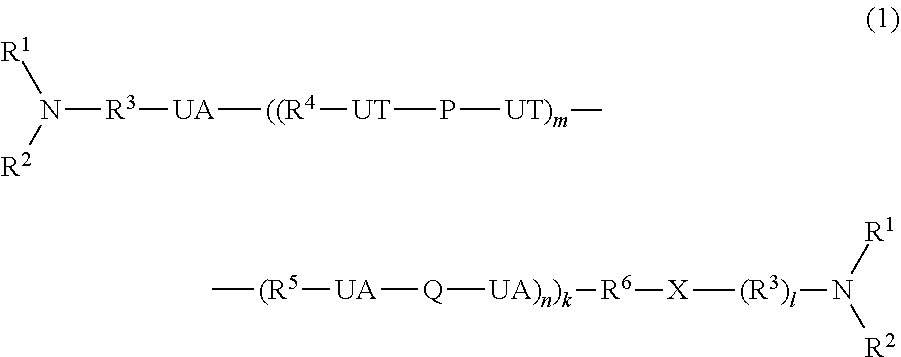Method for producing polyurethane elastic fiber
- Summary
- Abstract
- Description
- Claims
- Application Information
AI Technical Summary
Benefits of technology
Problems solved by technology
Method used
Image
Examples
preparation example 1
[0223]Preparation of Polyurethane Urea Polymer (B) Solution
[0224]400 g of polytetramethylene ether diol having a number average molecular weight of 1800 and 91.7 g of 4,4′-diphenylmethane diisocyanate were reacted while stirring under a dry nitrogen atmosphere for 3 hours at 80° C. Thereby, a urethane prepolymer, the terminals of which were capped with isocyanate was obtained. The reaction product was cooled to room temperature. Subsequently, 720 g of N,N-dimethylacetamide (hereinafter abbreviated as DMAc) was added thereto to dissolve the reaction product. Thereby, a urethane prepolymer solution was prepared. On the other hand, 8.11 g of ethylenediamine and 1.37 g of diethylamine were dissolved in 390 g of DMAc and the solution was added to the prepolymer solution mentioned above under vigorous stirring at room temperature. Thereby, a solution of a polyurethane urea polymer (B) having a viscosity of 360 Pa·s (30° C.) (solid content concentration: 31.1% by mass) was obtained.
[0225]I...
examples 1 to 6
[0226](Preparation of Urethane Urea Polymer (A) Having Tertiary Nitrogen Groups at Terminals)
[0227]To 300 g of the polyurethane urea (B) solution prepared in Preparation Example 1, a solution obtained by dissolving 2.8 g of diethylaminopropylamine (an amount equivalent to 3 parts by mass based on 100 parts by mass of the solid content of the aforementioned (B)) in 120 g of DMAc was added. The mixture was stirred and mixed so as to be homogeneous, and subsequently, the temperature was gradually increased to 100° C. While the temperature was maintained at 100° C., the mixture was stirred and heated for 20 hours. The mixture was cooled to room temperature, and thereby, a polyurethane urea polymer (A) having the tertiary nitrogen groups at terminals which had a viscosity of 52 mPa·s / 25° C. was prepared.
[0228]Polyurethane urea polymers (A) having the tertiary nitrogen groups at the terminals were prepared with the terminal tertiary nitrogen-containing alkylamine compounds shown in Table ...
reference example 1
[0245](Production of Dope of Polyurethane Urea Polymer and Spinning Dope for Elastic Fiber)
[0246]400 g of polytetramethylene ether diol having a number average molecular weight of 1800 and 91.7 g of 4,4′-diphenylmethane diisocyanate were reacted under stirring under a dry nitrogen atmosphere for 3 hours at 80° C. Thereby, a urethane prepolymer having terminals capped with isocyanate was obtained. The reaction product was cooled to room temperature. Subsequently, 720 g of N,N-dimethylacetamide (hereinafter abbreviated as DMAc) was added thereto and dissolved to prepare a urethane prepolymer solution. On the other hand, 8.11 g of ethylenediamine and 1.37 g of diethylamine were dissolved in 390 g of DMAc and the obtained solution was added to the prepolymer solution under vigorous stirring at room temperature. Thereby, a solution of polyurethane urea polymer (B) (concentration: 31.1% by mass) having a viscosity of 310 Pa-s (30° C.) was obtained.
[0247]A solution of the polyurethane urea...
PUM
| Property | Measurement | Unit |
|---|---|---|
| Percent by mass | aaaaa | aaaaa |
| Percent by mass | aaaaa | aaaaa |
| Percent by mass | aaaaa | aaaaa |
Abstract
Description
Claims
Application Information
 Login to View More
Login to View More - R&D
- Intellectual Property
- Life Sciences
- Materials
- Tech Scout
- Unparalleled Data Quality
- Higher Quality Content
- 60% Fewer Hallucinations
Browse by: Latest US Patents, China's latest patents, Technical Efficacy Thesaurus, Application Domain, Technology Topic, Popular Technical Reports.
© 2025 PatSnap. All rights reserved.Legal|Privacy policy|Modern Slavery Act Transparency Statement|Sitemap|About US| Contact US: help@patsnap.com



